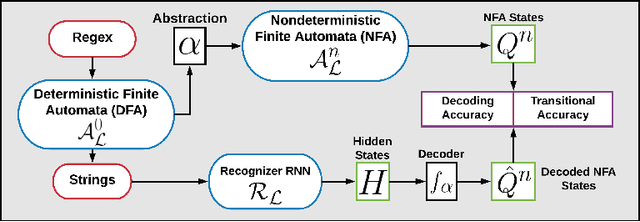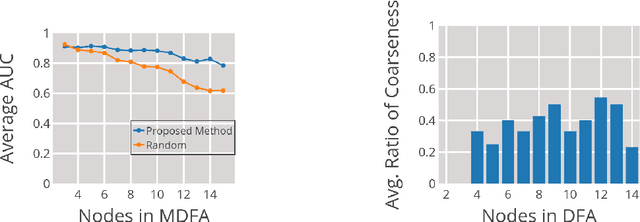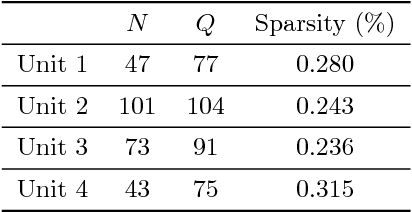Joshua J. Michalenko
Representing Formal Languages: A Comparison Between Finite Automata and Recurrent Neural Networks
Feb 27, 2019



Abstract:We investigate the internal representations that a recurrent neural network (RNN) uses while learning to recognize a regular formal language. Specifically, we train a RNN on positive and negative examples from a regular language, and ask if there is a simple decoding function that maps states of this RNN to states of the minimal deterministic finite automaton (MDFA) for the language. Our experiments show that such a decoding function indeed exists, and that it maps states of the RNN not to MDFA states, but to states of an {\em abstraction} obtained by clustering small sets of MDFA states into "superstates". A qualitative analysis reveals that the abstraction often has a simple interpretation. Overall, the results suggest a strong structural relationship between internal representations used by RNNs and finite automata, and explain the well-known ability of RNNs to recognize formal grammatical structure.
Data-Mining Textual Responses to Uncover Misconception Patterns
Mar 30, 2017



Abstract:An important, yet largely unstudied, problem in student data analysis is to detect misconceptions from students' responses to open-response questions. Misconception detection enables instructors to deliver more targeted feedback on the misconceptions exhibited by many students in their class, thus improving the quality of instruction. In this paper, we propose a new natural language processing-based framework to detect the common misconceptions among students' textual responses to short-answer questions. We propose a probabilistic model for students' textual responses involving misconceptions and experimentally validate it on a real-world student-response dataset. Experimental results show that our proposed framework excels at classifying whether a response exhibits one or more misconceptions. More importantly, it can also automatically detect the common misconceptions exhibited across responses from multiple students to multiple questions; this property is especially important at large scale, since instructors will no longer need to manually specify all possible misconceptions that students might exhibit.
 Add to Chrome
Add to Chrome Add to Firefox
Add to Firefox Add to Edge
Add to Edge